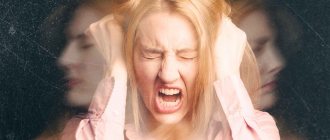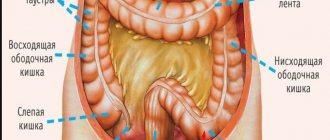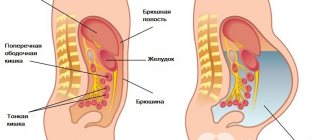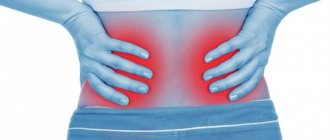This disorder is a chronic, relapsing mental illness that requires treatment. Bipolar disorder is one of the top ten most maladaptive diseases. This disorder is characterized by alternating depressive, manic and mixed episodes with periods of intermission - a completely healthy state in which patients do not feel signs of illness. It should be noted that there are no personality changes, even if phase changes occur frequently, and the person has been suffering from the disorder for quite a long time. However, it is known that patients' functional abilities deteriorate significantly as the number of episodes of bipolar disorder increases. Patients with bipolar disorder spend most of their lives in a painful state, the quality of life, social and family adaptation is significantly impaired, despite the fact that physically, as a rule, these are healthy people.
The prevalence of the disease is on average about 1% in the population, previously it was believed that cases of the disease are more common among women. Recently, manifestations of the classic disorder among men and women, as well as representatives of various cultural and ethnic groups, occur equally often.. Bipolar forms of the disease often develop in at a younger age, up to 25 years, and unipolar (with the manifestation of one type of mood disorder) - after 30 years. In later life, there is a tendency for the frequency of depressive phases to increase. Also, in more than 20% of cases, the manifestation of the disease is observed after 50 years.
In the case of the development of the bipolar variant, manifestation (i.e., the first signs of the disease) are noted at a young age, 59% of patients experience the first attack in childhood or adolescence (up to 20 years), but more than half of them do not receive therapy during subsequent 5 or more years. The correct diagnosis of bipolar disorder is established on average only 10 years after the onset of the disease. With this disorder, there is a high risk of suicide, especially common in adolescence.
What makes diagnosing bipolar disorder significantly more difficult is the presence of diseases in patients such as anxiety disorders or alcoholism, which can mask mood disorders. Quite often the disease is combined with the presence of somatic diseases - obesity, diabetes, diseases of the cardiovascular system, dysfunction of the thyroid gland. In this regard, insufficient motivation and decreased volitional efforts lead to increased morbidity and mortality in patients suffering from bipolar disorder.
Mostly, the idea of the causes of the disease is based on the genetic theory, which is revealed in the accumulation of the number of cases of the disease among first-degree relatives. However, the results of genetic, neuroendocrine, neurotransmitter, theoretical physiological and psychosocial theories suggest the presence of a complex etiology. At the moment, the influence of environmental factors, such as the pathology of pregnancy and childbirth or living in large cities, on the development of the disease has not been reliably proven.
There is evidence that in the development of phase formation in bipolar disorder, both psychogenic (socio-psychological reasons) and somatogenic factors (oncological diseases, head injuries, hormonal disorders; imbalance of basic hormones, intoxication of the body, including drug use; thyroid dysfunction). Despite the fact that in the case of bipolar course and manic episodes, external factors play a role only at the beginning of the development of the disease as provoking ones, and subsequently there is a tendency for the phases to spontaneously arise.
There has been an increase in the incidence of affective diseases associated with hormonal changes in women during menstruation, the postpartum period, and involution. Women who have experienced postpartum depression are more likely to develop bipolar disorder.
There are several personality traits that are associated with an increased risk of developing bipolar disorder. These are individuals of the melancholic type, people who are easily vulnerable, prone to deep emotional experiences, developed intuition and the need for empathy. Also, people who have a need for constancy and responsibility, conscientious, with a high level of personal anxiety, a sense of inferiority, suspiciousness, shyness, timidity (psychasthenic personality traits). Among the variants of the unipolar course (i.e. when there is only one variant of a mood disorder, for example depression), more often there are people who, before the development of the disease, have traits of isolation, a tendency to withdraw into their own fantasies, outwardly emotionally cold, preferring loneliness (having schizoid personality traits).
At risk are patients prone to emotional instability, with violent affective reactions to external causes, and a tendency to spontaneous mood swings. On the other hand, people who suffer from a lack of proper emotions, who are conservative, monotonous and rigid are predisposed to the disease.
Manic state, signs
It can manifest itself in different ways, based on this, several stages are distinguished. A manic state is a special psychological state of a person, in which three signs occur together:
- fast speech;
- increased excitability;
- very cheerful mood.
Is this a disease? Yes, it requires attention, but may not be noticeable at first glance. Mania is a condition that can manifest itself both as a normal human condition and as a pathological syndrome. But it’s not scary at all and it’s treatable.
Manifestations of the disease.
Bipolar psychosis can manifest itself in different types of episodes (manic, depressive and mixed) with varying degrees of severity. During severe episodes, psychotic disturbances (delusions and hallucinations) may occur. The presence of an episode of elevated mood (mania) of any severity indicates that this affective disorder belongs to the bipolar spectrum.
Characteristics of the manic phase. Classic manifestations include a triad of symptoms - elevated mood, accelerated thinking, increased physical activity. This patient is characterized by:
- Unsupported optimism, increased cheerfulness, incorrect assessment of the chances of success - investing money in dubious enterprises, participating in the lottery with confidence in a big win, etc.
- The thinking of such patients is accelerated, their speech is often confused (“jumping thoughts”), has the character of a monologue, reaching a degree of incoherence. Active gesticulation, hasty speech with “swallowed” words. With strong passion and the inability to express emotions in words, simply waving your arms occurs.
- Increased distractibility and superficiality of judgment.
- Desire to take risks - commit a robbery or a dangerous stunt for fun, participate in gambling, etc.
- Overconfidence, ignoring advice and criticism. Disagreement with a certain opinion can cause aggression.
- Excessive arousal, energy, feeling of “superhealth”, decreased need for sleep.
- Severe irritability.
There are three degrees of severity of mania: mild - hypomania; moderate severity - mania without psychotic symptoms; and severe - mania with psychotic symptoms. In mild cases (hypomania), there is mild mood elevation and/or irritability for at least a few days, increased motor activity and energy, a sense of well-being and physical and mental productivity, decreased need and shorter sleep duration. With hypomania, social maladjustment does not occur.
Delusional states are characterized by delusions of grandeur, special origin, persecution, meaning, etc.
Depressive symptoms are diametrically opposed. Decreased mood, slowed thinking and speech, motor retardation are signs of the “classic triad” of depression. Patients may experience:
- Malaise in the physical sense.
- Complete apathy, sadness, loss of interest in life, loss of pleasure.
- Distrust, self-isolation.
- Sleep disturbances.
- Slow speech, silence.
- Impaired concentration.
- Loss of appetite or, conversely, gluttony (rare).
- Decreased self-esteem.
- Ideas of guilt.
- A gloomy pessimistic vision of the future.
- The desire to leave life.
- Decreased motor activity, even to the point of stupor.
Depressed mood can manifest itself persistently throughout the day, or it can have daily dynamics with worsening symptoms in the morning.
For depressive episodes, the duration must be at least 2 weeks, but the diagnosis may be made for shorter periods if the symptoms are unusually severe and occur quickly.
Somatic symptoms during the depressive phase are considered to be a loss of interest and pleasure in activities that are normally enjoyable; loss of emotional reactivity to the environment and events that are normally pleasant; waking up in the morning 2 or more hours earlier than usual; depression is worse in the morning; objective evidence of clear psychomotor retardation or agitation (noted by a stranger); a clear decrease in appetite; weight loss (considered to be indicated by a 5% weight loss in the last month); marked decrease in libido. This somatic syndrome is usually considered present if at least 4 of the symptoms mentioned above are present or if only 2 or 3 are present, but are quite severe. If, with mild depression, the patient’s well-being and activity changes, but maladjustment does not occur, then as the symptoms become more severe with the increasing severity of the mood disorder and the appearance of psychotic symptoms (delusions, hallucinations, stupor), the patient may need hospitalization. In delusional experiences, plots of sinfulness, threatening misfortune, impoverishment, guilt, the patient’s responsibility for what is happening, auditory hallucinations - in the form of accusing or insulting voices - are more common; olfactory hallucinations in the form of the smell of rotting flesh and dirt.
Mixed episodes are characterized by the simultaneous existence of hypomanic, manic or depressive symptoms lasting at least 2 weeks, or their rapid alternation over several hours, which often leads to significant social maladjustment and hospitalization. These conditions are usually accompanied by general emotional instability, with them the appearance of psychotic symptoms is often observed; symptoms include hyperactivity, insomnia, suicidal thoughts, and loss of appetite. The patient may experience a cheerful mood during deep stupor, a sudden manifestation of joy against the background of a melancholic state, or suppressed melancholic thoughts during excitement.
How to recognize the disease
Signs of mania vary, but the most common are the following:
- Megalomania.
- Crazy ideas.
- Reassessing your capabilities.
- An obsession with protecting oneself.
- Sexuality increases.
- Appetite increases.
- Distractibility appears.
Mania is a mental disorder that requires special attention. A psychological test that can be done at home will help you understand whether you are susceptible to this disease.
How to treat manic-depressive syndrome?
During the treatment of manic-depressive psychosis, biological therapy is used in combination with psychotherapy or sociotherapy.
There are three stages in the treatment system for affective disorders:
- the first stage is relief therapy aimed at quickly eliminating acute affective symptoms;
- the second stage - stabilizing therapy is carried out from the moment the therapeutic effect is achieved until the formation of clinical intermission and the end of the phase;
- the third stage is preventive therapy aimed at preventing relapse of the disease, carried out on an outpatient basis (duration of at least a year).
Manic states are treated with antipsychotic drugs and lithium salts. More effective antipsychotics with a sedative effect are aminazine, propazine, tizercin, chlorprothixene, leponex, clopixol, risperidone. A powerful means of relieving manic agitation is haloperidol. Unlike other antipsychotics, haloperidol promotes the most rapid elimination of motor hyperactivity, irritability and more quickly normalizes the pace of thinking and mood, causing severe lethargy and depression.
Clopixol-acufaz is a long-acting drug, the sedative effect develops gradually, reaches a maximum after 6-8 hours and persists for 2-3 days. A major role in the relief of manic-depressive states is played by lithium salts, which evenly reduce all components of the manic triad without causing sedation and somnolence. The most important aspect of the action of lithium salts is the stabilizing “normothymic” effect.
Treatment of manic-depressive syndrome is recommended to begin with the administration of lithium carbonate. Lithium hydroxybutyrate is an active psychotropic drug and has the antimanic properties of lithium and the tranquilizing effect of gamma-hydroxybutyrate (GHB), the drug is available in the form of ampoules of 2 ml of a 20% solution per dose containing 400 mg of lithium hydroxybutyrate. To quickly relieve manic agitation, lithium salts and antipsychotics are used. In the presence of resistant mania, the addition of finlepsin is useful.
In the case of treatment with neuroleptics, the development of neuroleptic syndrome is possible: hyperkinesis, increased muscle tone, akathisia (restlessness), tachykinesia (need for movement), hypersalivation, greasiness of the skin, importunity, insomnia. Treatment of complications includes the use of cyclodol, parkopan, triphen, caffeine, 10% solution of cordiamine, vitamin B4, magnesium sulfate (25% solution).
Treatment of the depressive phase of manic-depressive psychosis consists, first of all, in a direct, targeted thymoanalytical effect on the affect of congratulatory depression and requires intensive use of tricyclic antidepressants - melipramine and amitriptyline or the 4-cyclic antidepressant anafranil. Despite the large number of new antidepressants, these drugs remain drugs that directly and quite strongly influence endogenous depression in manic-depressive psychosis. The choice of antidepressant is determined by the characteristics of the psychopathological picture of depression.
For anxious depression, antidepressants with a sedative effect are indicated. To treat depressive phases, monoamine oxidase inhibitors are used: nuredap, niapamid, transamine (parnate), in which the stimulating effect predominates. These drugs cannot be combined with tricyclic antidepressants, with some medications and food products (cheese, smoked meats, legumes, wine), so they are not so widely used.
Recently, a large number of new antidepressants have been synthesized, fluoxetine (Prozac), Zoloft, Paxil, Sinequan, Doxepin, Lerivoy, Remer, Cipramil, etc. In the case of long-term and ineffective treatment with antidepressants, their immediate withdrawal is indicated to overcome resistance to this drug and switch to other medicine. Side effects and complications during treatment with antidepressants include headache, dizziness, thirst, dry mouth and skin, impaired accommodation, tremor, itching, and urinary retention. Most of these disorders appear at the beginning of therapy, do not require discontinuation of the drug and disappear when the dose is reduced. Contraindications to the prescription of antidepressants are acute liver and kidney diseases, decompensated heart defects, stage III hypertension, blood diseases, gastric ulcers in the acute stage, glaucoma.
Positive results in the treatment of the depressive phase are obtained by electroconvulsive therapy (6-8 sessions), insulin therapy with hypoglycemic doses (20-25 hypoglycemia) in combination with antidepressants. A sleep deprivation technique is used for 24-48 hours.
Preventive therapy with lithium salts is effective in the presence of manic attacks and, less commonly, depressive attacks. The lithium concentration in the blood should be 0.6-0.8 mmol/l. The use of tricyclic antidepressants as maintenance therapy and prevention is more appropriate for unipolar depression. Recently, some anticonvulsants have been used for prophylactic purposes: Finlepsin (carbamazepine), Depakine, Convulex. Psychotherapy plays an important role in disease prevention: supportive, cognitive, interpersonal, group, health education, genetic counseling, healthy lifestyle.
The prognosis for manic-depressive psychosis is generally favorable. However, with a long course of phases with the presence of psychotic symptoms, difficulties of a social nature arise and the prognosis worsens. When assessing the prognosis, it is necessary to take into account the age of onset of the disease and the clinical manifestations of the first phase.
Recovery is unlikely in the case of the bipolar type of the disease. If unipolar depression begins early, then the frequency of the phases decreases in old age. In conditions of early onset of unipolar mania, full recovery may occur at the age of 50-60 years. It is impossible to make a reliable prognosis regarding the course of manic-depressive psychosis for each patient. Patients with manic-depressive psychosis often develop somatic diseases, such as hypertension, diabetes mellitus, which also worsens the prognosis.
Manic. Test
You can take it from an experienced psychologist, but a simplified (at-home) version is also possible. You shouldn’t worry too much before taking the test; manic thinking is a kind of deviation from the norm; if it doesn’t cross the line of what’s acceptable, then you shouldn’t focus on it.
What questions might you get on this test? Examples of them are the following:
- Was my mind sharper than ever before?
- Have you been sleeping much shorter than usual?
- Was the distraction due to the mass of ideas that kept coming into my head?
- Do I feel an eternal need for communication?
- Did I have a feeling of boundless happiness?
- Has my activity level been increased?
These are not all possible questions. It is worth considering the fact that when answering, you need to take into account the whole week, and not just the last two or three hours. Mania is not a death sentence; this disease is completely curable.
Diagnostics and therapy
Manifestations of bipolar syndrome are not always promptly diagnosed due to the correspondence of its symptoms to other mental disorders. To correctly make a diagnosis, a certain period of observation of the patient is necessary: this makes it possible to make sure that there are manic attacks and depressive manifestations, and that they are cyclical.
To identify the disease, it is necessary to consult a specialist, where a clinical conversation will be held, including questioning and examination of the patient, study of anamnestic data, both subjective and objective (from relatives), and diagnostic testing using screening scales and self-questionnaires. Thorough examinations may be required - tomography, laboratory blood tests, ultrasound, study of hormonal profiles. This will allow us to determine the presence of physical pathologies, cancerous tumors, and malfunctions of the endocrine system. Diagnosing bipolar disorder requires an integrated approach. It involves collecting as much information as possible about the patient, as well as analyzing the duration of his behavioral disorders and their severity. It is necessary to observe the patient, make sure there are no physiological pathologies, drug addiction, etc.
Timely determination of the clinical picture and development of a treatment strategy guarantees a positive result in a short time. The modern techniques available in their arsenal can effectively combat attacks of psychosis, extinguish them, improve the quality of life and social adaptation of the patient.
Who will help?
There are several degrees of the disease, the mildest of which is called “hypomania.” People with this diagnosis are often considered very active, active, sociable, and often the syndrome is not even noticed. The whole point is that only an experienced specialist can give an assessment, so as not to accuse an innocent person of anything.
People with manic syndrome often look much younger than they actually are, this effect is created by:
- animated facial expressions;
- fast speech;
- sudden movements;
- sociability;
- activity.
If the syndrome is not recognized at this stage, then it can give way to severe depression or all the symptoms become much deeper, and delusions of grandeur appear.
After manic syndrome has been diagnosed, the psychologist suggests acting comprehensively, using psychotherapy and medications. Another nuance of this disease is that the causes of its occurrence need to be eliminated. As a rule, the disease is accompanied by several other diseases. Possible:
- psychoses;
- neuroses;
- depression;
- obsessive fears.
These are not all the problems that can accompany manic syndrome.
Clinical picture
The intensity of the Manic syndrome can be expressed to varying degrees. In mild cases, a slightly elevated mood and increased performance are noted. Patients experience a feeling of general well-being and satisfaction; their surroundings take on rainbow hues in their minds (hypomanic state).
More severe cases are characterized by excessive cheerfulness, extreme variability of attention, superficiality of judgments and assessments, and an optimistic attitude towards the present and future. Patients are constantly in excellent spirits, do not get tired, feel a surge of strength and extraordinary vigor.
The change in associative processes, along with the acceleration of the pace of thinking, affects the variability of attention and the sharpening of memory (hypermnesia). Patients are extremely verbose, their speech is hasty, they talk incessantly. Often a “jump of ideas” develops - a sharp acceleration of thinking, in which there is a continuous change from one unfinished thought to another. Confusion and inconsistency of statements are possible, sometimes reaching complete incoherence. Everything that happens around, both significant and insignificant, attracts the patient’s attention, without, however, dwelling on anything for a long time. In some cases, this variability of attention becomes so intense that the patient fixes with his gaze and comments on absolutely everything that comes into his field of vision (hypervariability of attention, or Wernicke’s symptom of hypermetamorphosis).
An increased desire for activity manifests itself in patients in different ways: some take on a lot of tasks and do not complete any of them, others randomly, thoughtlessly, and often absurdly spend money buying unnecessary things, others begin to actively interfere in the work process of the enterprise , where they are working, proposing to radically change its structure. Often patients leave work, visit their friends and relatives all day long, creating fuss and chaos around them.
Those susceptible to Manic syndromes are characterized by an overestimation of their own personality: they discover extraordinary abilities, express a persistent desire to change their profession, believe that they have the talents of a statesman, writer, artist, actor, scientist, and sometimes pretend to be such. It is not uncommon, especially among women, to have ideas of erotic content: they believe that they are the object of attention and desire of people of the opposite sex. The listed ideas of revaluation of personality (or ideas of greatness) are characterized by extreme instability and variability.
Manic patients look younger, they have lively and expressive facial expressions, increased appetite, increased sexuality, persistent insomnia or a significant reduction in sleep duration, increased heart rate, excessive salivation, and frequent urination. In women, as a rule, the menstrual cycle is disrupted.
Depending on the psychopathological characteristics, simple and complex variants of M. are distinguished.
Simple variations include unproductive mania, confused mania, and angry mania.
Unproductive (inactive) mania is a manic state with a predominance of elevated mood and lack of desire for activity. The acceleration of associative processes in these cases is not clearly expressed.
Confused mania is a condition in which a sharp acceleration of associative processes comes to the fore, which leads to incoherent thinking and confusion of thoughts.
In angry mania, irritability, pickiness, anger, and, in some cases, aggressiveness predominate.
Complex variants of the syndrome include manic states, in which delusions of staging, acute fantastic delusions (see Delirium), oneiroid (see Oneiroid syndrome), and catatonic disorders (see Catatonic syndrome) develop in the structure of mania. The development of hallucinations, pseudohallucinations, and phenomena of mental automatism is also possible.
In a number of cases in the structure of M. s. Disorders may occur that at first glance are incompatible with the picture of the condition: senestopathies (see), hypochondriacal delusions and even suicidal tendencies.
Why does it occur?
Two factors come into play here:
- genetic predisposition;
- constitutional factor.
People with manic syndrome often have inflated self-esteem and self-esteem. They often overestimate their talents and capabilities. Some of them can be persuaded by showing your own example, but many remain unshakable.
Treatment of manic-depressive syndrome at home
As a rule, treatment of manic-depressive syndrome is carried out in an inpatient setting due to the suicidal tendencies of depressed patients or the inappropriate behavior of manic patients. Before hospitalization in a psychiatric clinic, relatives or other persons must be provided with continuous care and monitoring of the patient. They must understand the risk of suicide.
Agitated patients with a picture of anxious-agitated depression can be prescribed for urgent treatment chlorpromazine (50-100 mg) intramuscularly in combination with diphenhydramine (2 ml of 1% solution), sibazone 10 ml intramuscularly. For excited patients with a picture of manic syndrome - haloperidol (5 mg) intramuscularly in combination with aminazine (50-100 mg) intramuscularly or clopixol-acupaz (50-100 mg) intramuscularly.
Types of manic syndrome
As mentioned earlier, the disease has degrees of complexity and varieties. The following types are distinguished:
- Manic-paranoid.
- Oneiric mania.
- Crazy option.
- Joyful mania.
- Angry mania.
While the last three points are somewhat clear to the average reader, the first two require some explanation.
- The manic-paranoid degree manifests itself in relationships. Such people are capable of pursuing the object of their passion, and delusional ideas appear in relation to their partner.
- Oneiric mania. At the peak of the syndrome, hallucinations occur, a very serious and severe degree of manic syndrome, but, like all others, it is treatable.
If we consider the delusional version, the patient builds a logical sequence of delusional ideas, as a rule, all this concerns the professional level.
The next two types are the complete opposite: in the first case there is increased activity, in the second - short temper, anger, and conflict.
Manic
Mania as a personality quality is a tendency to a painful mental state with the concentration of consciousness and feelings on any one idea.
A maniac runs into the store and shouts: “I’m going to rape someone now!” Girl, what's your name? - Zina. - I won’t rape you. My mother's name is also Zina. What's your name, man? - Well, actually, Nikolai, but my friends call me Zina.
In an abandoned dark park, late in the evening, a man is sitting on a bench - over 2 meters tall, shoulders - slanting fathoms, pumped up - his T-shirt is already torn, camp tattoos, playing with a fin in his hand... A man approaches the bench - about fifty meters, thin, pale, reaching , intelligent glasses on his nose... He sits down on the bench. A man, in a powerful bass voice: “Eh, what kind of miracle is that?!” Goner, in a thin voice: - I am a maniac, a serial killer, I specialize in people like you, I already have 93 corpses on my account... The man, laughing hysterically, slides off the bench, rolls on the ground, blushes with wild laughter, and suddenly suddenly grabs his heart - and freezes. The goner, sighing sadly: - 94...
Manicity in the conditions of modern manic-depressive civilization is more the rule than the exception. If mania is the state of a person under the influence of the energy of passion, then depression is the daughter of ignorance. It, like a mirror, reflects a state of reduced physical activity, a twilight state of mind, when it seems to a person that everything is hopeless, that there is no meaning in anything.
V.G. Tushkin claims that the word depression literally means depressed, press - to crush, suppress. That is, a depressed state. A depressed state of the physical body, a depressed state of the psyche, and if we analyze this state from the point of view of the three gunas - goodness, passion and ignorance, then depression is a product of the guna of ignorance. That is, ignorance suppresses our activity. And therefore we see that people under the influence of the guna of ignorance are inactive, they are in such a very dissatisfied state. That is, the guna of ignorance is what hides, covers passion, so people are less active, have less energy and also covers goodness. Therefore they have less knowledge, less optimism, less understanding. That is, depression is a state when the soul is simply covered, it is not the soul itself. The soul is not sick, it does not have such a property, just like the sun, in the strict sense of the word - it cannot be closed. But it may seem to us that the sun is covered by clouds, although the sun itself evaporates water, creates clouds itself, and with this product of its own, this sun is hidden from us, that is, the guna of ignorance is what simply closes reality from us. And, as a rule, people end up in this state of ignorance and depression when they tried to act in the guna of passion, they had ambitions and they did not succeed. Their passion was without the control of goodness. Because without the control of goodness, this passion slowly turned into a state of ignorance. And there is only one way out from here - the development in oneself of a culture of goodness, spiritual knowledge.
Doctor, drawing a square and another one around it - Patient, what do you think this is? — A square room in which there is a square bed on which a man and a woman make love. The same question in relation to the picture: a triangle, and another one around it: - A triangular room in which there is a triangular bed (etc.) The doctor draws a circle, and another one around it - well, what do you think this is? ? The patient looks at the drawing and asks in an irritated tone: “Doctor, are you by any chance a sexual maniac?”
Unlike depression, mania is closely related to the energy of passion. Manic - a strong desire to achieve something turns into depression. The result is a kind of swing: from the energy of passion to the energy of ignorance. People are sometimes inspired, sometimes disappointed, sometimes inspired, sometimes despondent, sometimes showing enthusiasm, sometimes indifference and indifference. You can jump from this swing, falling under the influence of the energy of goodness, embarking on the path of spiritual development, personal growth and self-improvement.
Renowned psychologist Nancy McWilliams writes : “ People in a manic state or with a manic personality are famous for their grandiose plans, accelerated thinking and great freedom from ordinary physical needs such as eating and sleeping. They seem to be constantly at their best - until suddenly exhaustion sets in. Since a person experiencing mania literally cannot “slow down,” drugs such as alcohol, barbiturates, and opiates, due to their depressant effects on the nervous system, can be very attractive. It seems that many humorists and comedians have a hypomanic personality structure. However, their unrelenting wit can become completely exhausted. Sometimes the dysthymic side of such a humorous personality is more noticeable, such as in Mark Twain, Ambrose Byers or Lenny Bruce, who suffered from severe depression. Manic people are characterized by high energy, excitement, mobility, switchability and sociability. They know how to perfectly entertain and imitate, and are good storytellers and wits. This is highly appreciated by their friends, although sometimes they complain that they use humor to turn any serious remarks around and therefore it is difficult to enter into close emotional contact with them. When negative affect occurs in people with manic and hypomanic psychologies, it manifests itself not as sadness or disappointment, but as anger—sometimes in the form of a sudden and uncontrollable expression of hatred.”
Maniac at a psychiatrist's appointment. The doctor is trying to calm the patient. - Let me tell you a riddle: one color in winter and summer. - BLOOD!!!
- Vasya, why are you so unhappy, tortured? - Yes, you see, yesterday my friend and I were walking in the park, and there was a maniac there. - Sexy? - Bisexual.
Petr Kovalev Other articles by the author: https://www.podskazki.info/karta-statej/
Treatment of manic-depressive syndrome during pregnancy
The presence of a corresponding diagnosis in one or both parents is not a contraindication to pregnancy, however, the disease is considered hereditary, which means that the child is at risk of experiencing the same disease.
Treatment of manic-depressive syndrome in pregnant women is carried out by highly specialized specialists. It is necessary to take a balanced approach to the issue of planning pregnancy and taking pharmacological medications at each stage of pregnancy. Caution in prescribing requires not only antidepressants and antipsychotics, but also lithium salts - all of them can have a significant effect on the developing fetus. Changing the course of medications during pregnancy and breastfeeding is discussed individually with your doctor.
With any type of therapy, it is necessary to take into account the somatic condition of the expectant mother and, before prescribing it, conduct a thorough examination of the cardiovascular system, endocrine system, and digestive tract.
What medications are used to treat manic-depressive syndrome?
- Aminazine - doses vary from 100 to 600 mg per day;
- Pipolfen - in combination with aminazine, at a dose of 150 mg;
- Tizercin - in a dose of 25-50 mg at a time, twice a day.
- Haloperidol - doses range from 60 to 100 mg;
- Clopixol-acufase - pharmaceutical dose 200 mg once every 2 weeks;
- Lithium carbonate - initial dose 0.9 g/day, gradually (over 4-5 days) the dose increases to 1.5-2.1 g/day;
- Gamma-hydroxybutyric acid (GHB) - 1600-3200 mg/day intravenously, it is not recommended to administer more than 1200-1600 mg at a time;
- Amitriptyline - the initial dose is not lower than 75 mg/day, in the absence of contraindications it is increased by 25-50 mg/day, bringing it to 200-250 mg/day;
- Finlepsin - prescribed at a dose of 0.2 g/day, then gradually increased to 0.6-0.8-1.2 g/day;
- Melipramine - at a dose of 200-300 mg/day.
Treatment of other diseases starting with the letter - m
| Treatment of malaria |
| Treatment of Marseilles fever |
| Treatment of mastitis |
| Treatment of mastopathy |
| Treatment of megaloblastic anemia |
| Treatment of meningococcal infection |
| Migraine treatment |
| Treatment of multiple myeloma |
| Treatment of skeletal myeloma |
| Treatment of mycosis of the lungs |
| Treatment of mycoplasmosis |
| Treatment of myocarditis |
| Treatment of thrush |
| Treatment of urolithiasis |
The information is for educational purposes only. Do not self-medicate; For all questions regarding the definition of the disease and methods of its treatment, consult your doctor. EUROLAB is not responsible for the consequences caused by the use of information posted on the portal.










